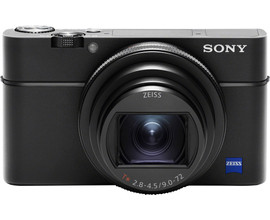
Compare the Sony CyberShot DSC-RX100 IV with the DSC-RX100 VA and the DSC-RX100 VI
Sony Cybershot DSC-RX100 VI
Pros
- You can focus quickly and accurately with the touchscreen.
- Thanks to the optical image stabilization, you take photos with a slower shutter speed of 4 stops maximum.
- You make objects look closer with the zoom range of 24-200mm.
Cons
- You can't connect an external microphone to improve the sound quality of your videos.
In short
| Sony RX100 IV | Sony RX100 VA | Sony RX100 VI | |
|---|---|---|---|
| Sensor | Exmor RS CMOS | Exmor RS CMOS | Exmor RS CMOS |
| Number of photos per second | 16 | 24 | 24 |
| Zoom range | 24-70mm | 24-70mm | 24-200mm |
| Viewfinder | Yes | Yes | Yes |
| Touchscreen | No | No | Yes |
| Focus | Contrast detection | Phase detection AF | Phase detection AF |
| Optical image stabilization | Yes | Yes | Yes, up to 4 stops |
Image quality
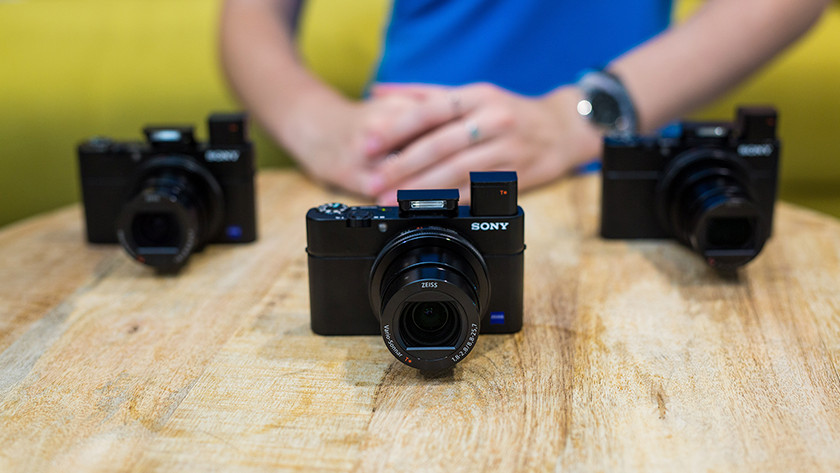
DSC-RX100 IV: optical image stabilization
The Sony CyberShot DSC-RX100 IV has an advanced Exmor RS CMOS sensor. This helps you to take sharp photos on both light and dark locations. The camera also has a fast image processor to process the recordings. These technologies add lots of detail to your photos and reduce the noise. The optical image stabilization corrects the motion blur. This is especially useful when you zoom in with your lens because it's harder to keep your camera steady. It's advised to use a tripod for darker locations.

DSC-RX100 VA: optical image stabilization
With the Sony CyberShot DSC-RX100 VA, you take sharp photos in different lighting thanks to the advanced Exmor RS CMOS sensor inside the camera. The fast image processor provides detailed images with little noise. This camera also has optical image stabilization that reduces motion blur. This way, you easily take photos out of your hand even when you zoom in with the lens. The image stabilization doesn't correct enough to take photos in dark locations without using a tripod.

DSC-RX100 VI: image stabilization up to 4 stops
The Sony CyberShot DSC-RX100 VI has the same sensor and processors as the other 2 cameras. You take razor-sharp photos and videos with little noise. Thanks to the advanced image stabilization, you photograph with a longer shutter speed of 4 stops maximum. This is useful when you take photos out of your hand in a dark location or when you zoom in with your lens. The RX100 VI has the largest zoom range, namely 24-200mm. The other cameras have a range of 24-70mm.
Speed of the camera

DSC-RX100 IV: 16 frames per second
With the Sony CyberShot DSC-RX100 IV, you take 16 photos per second thanks to the temporary storage capacity for 48 JPEG or 26 RAW files. This is where your camera stores photos before it stores them on the memory card. It's possible to take photos of moving objects because of this. The high number of photos per second makes it easier to capture the right moment. You can focus using contrast detection. This technology isn't as fast as phase detection, which the other two cameras have.
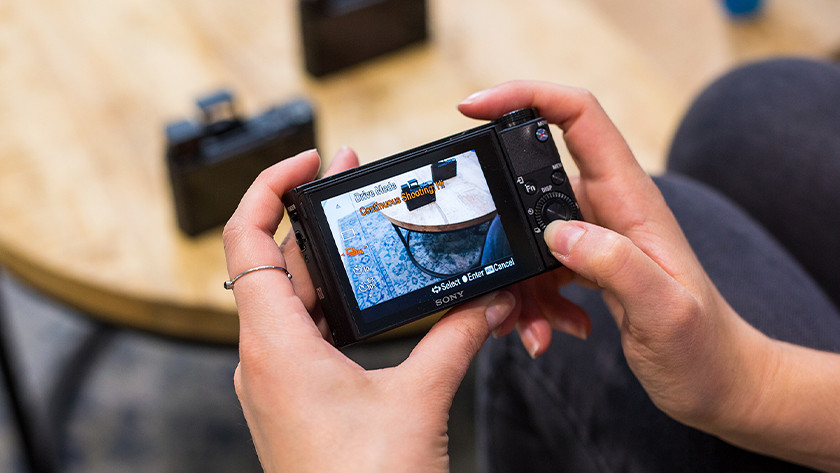
DSC-RX100 VA: 24 frames per second
Compared to the RX100 IV, the RX100 VA has a large buffer where the camera temporarily stores photos. This buffer can store up to 150 JPEG or RAW files, which means you can take 24 photos per second. Also, the RX100 VA uses phase detection autofocus to focus. It's a fast technology developed to quickly focus on your object and track moving objects. This makes the camera suitable for taking photos of fast actions.

DSC-RX100 VI: 24 frames per second
Like with the RX100 VA, you can take 24 photos per second with the Sony CyberShot DSC-RX100 VI. The camera stores these photos on a temporary storage for up to 233 JPEG or RAW files. After, the camera stores them on the memory card. The RX100 VI also uses phase detection autofocus. This fast focus technology doesn't just let you take photos quickly, but they're also very sharp. For example, you focus on an athlete and the image stays sharp while you follow him.
User-friendliness

DSC-RX100 IV: tiltable screen
The Sony CyberShot DSC-RX100 IV has a screen and viewfinder that easily helps you to define the framework of your photo. The screen is 180 degrees tiltable, which is useful when you want to photograph from a low perspective. You can also use it for vlogs. A touchscreen to easily adjust your settings or to focus, is missing. Reflections occur on the screen when the sun is shining bright. When this happens, you can use the viewfinder to define the framework of your photo.
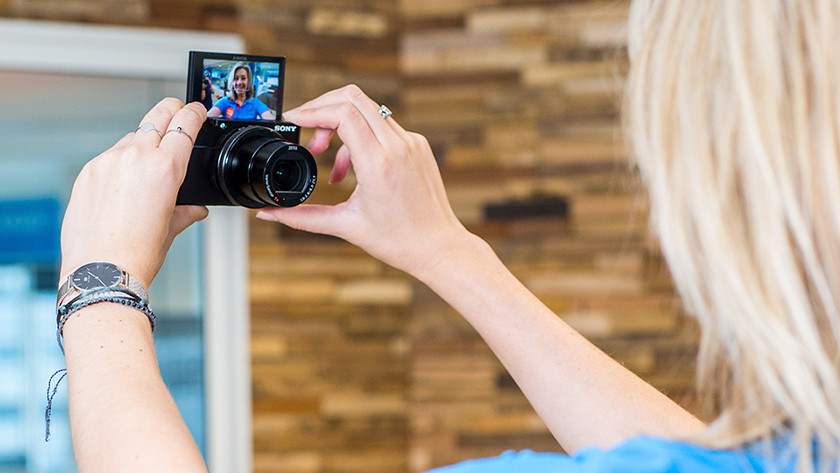
DSC-RX100 VA: tiltable screen
With the Sony CyberShot DSC-RX100 VA, you define the framework of your photo using the screen or the viewfinder. The screen doesn't have touchscreen to quickly focus or adjust settings. You tilt the screen up to 180 degrees to take photos from difficult angles. The tiltable screen also makes the camera suitable for vlogs. Use viewfinder to define the framework of your photo when the sun is reflecting on the screen.
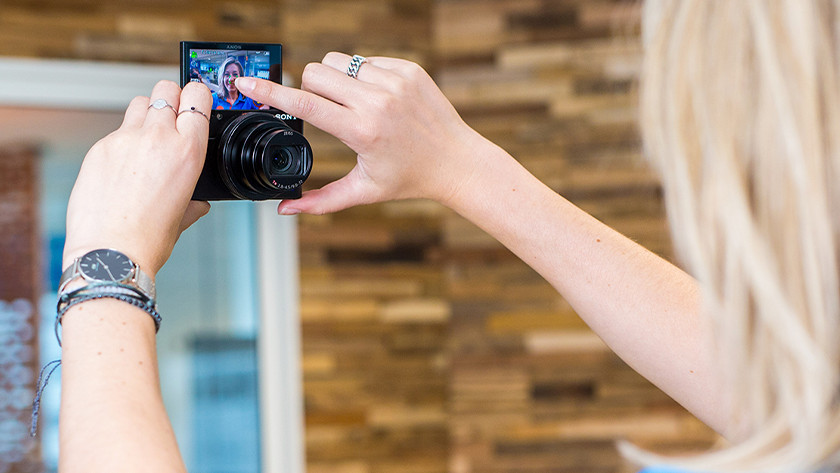
DSC-RX100 VI: tiltable touchscreen
The Sony CyberShort DSC-RX100 VI has both a screen and a viewfinder. The screen of this camera has touchscreen. You can click the screen to quickly focus or change settings like the shutter speed. You tilt the screen up to 180 degrees to record vlogs or take photos from difficult angles. When the sun is shining bright, use the viewfinder. This way, the reflection of the sun doesn't hinder your photography.



